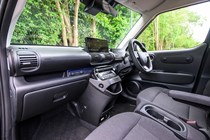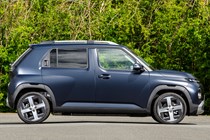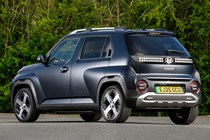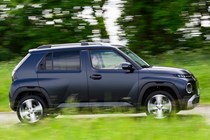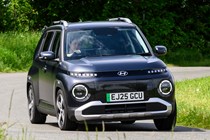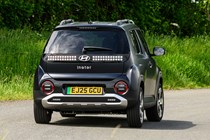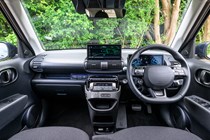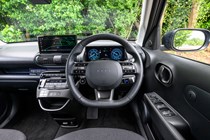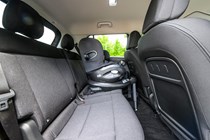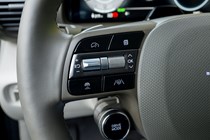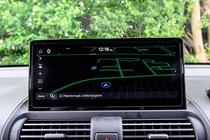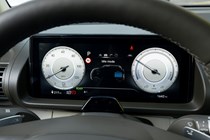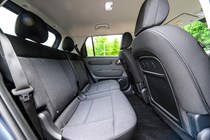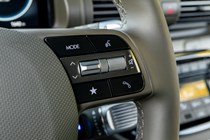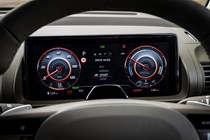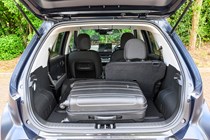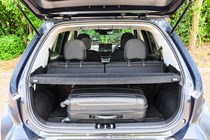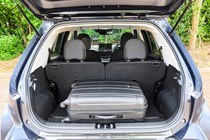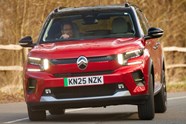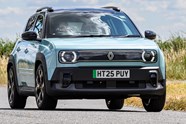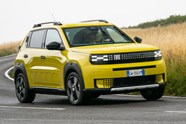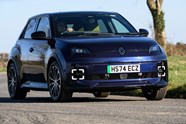
Hyundai Inster review: affordable electric charm personified
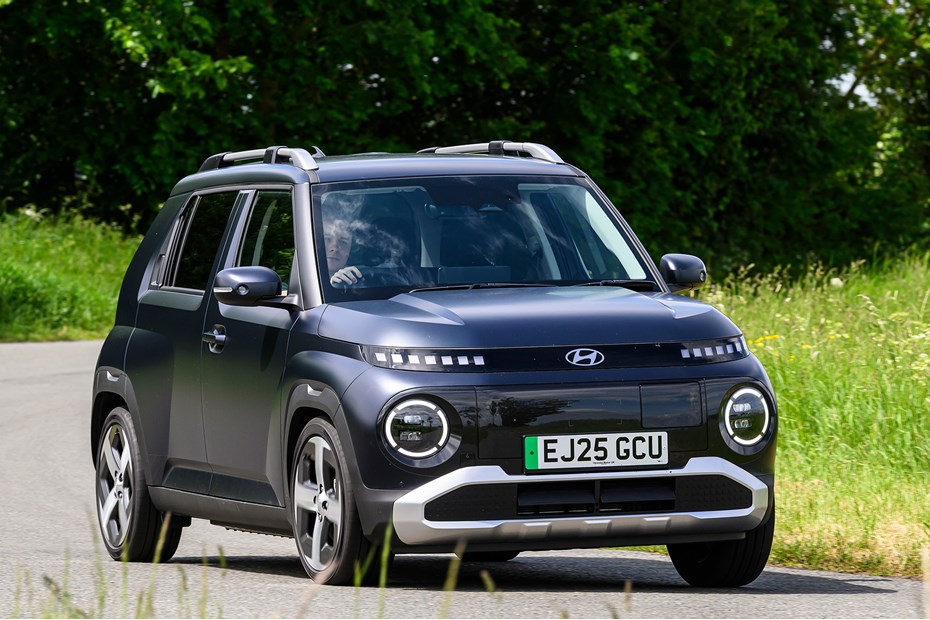
At a glance
| Price new | £23,505 - £28,755 |
|---|---|
| Used prices | £14,991 - £21,460 |
| Road tax cost | £195 |
| Insurance group | 21 - 23 |
Get an insurance quote with

|
|
| Fuel economy | 4.1 - 4.3 miles/kWh |
| Range | 203 - 229 miles |
| Miles per pound | 6.5 - 12.6 |
| Number of doors | 5 |
| View full specs for a specific version | |
Available fuel types
Fully electric
Pros & cons
- Incredibly spacious interior
- Nippy performance around a city
- Sliding rear seats offer extra versatility
- Strict four-seater
- Soft brake pedal
- Occasionally crashy ride
Hyundai Inster SUV rivals
Overview
Should you buy a Hyundai Inster?
If you’re in the market for a small electric car that doesn’t cost the earth, the Hyundai Inster should be right at the top of your shortlist. It’s smartly priced, thoughtfully designed, and far more practical than its compact dimensions suggest. More importantly, it doesn’t feels compromised like many previous small EVs have. It feels like a car created for real people – not just early adopters or tech obsessives.
Its lively low-speed performance, accurate steering, and well-judged ride quality, are perfectly suited to the urban jungle. It’s big where it counts – big on character, big on flexibility, and big on performance. For city driving, it’s hard to beat. The interior is bristling with thoughtful tech, and is genuinely usable in terms of space for both people and luggage.
It’s not perfect – some of the plastics feel built to a budget, and it’s not quite as chic or emotionally desirable as the Renault 5 E-Tech, Fiat Grande Panda or Renault 4 E-Tech – but that’s hardly a deal-breaker. In fact, the Hyundai Inster’s honesty and charm are a big part of its appeal. It’s comfortable being what it is: a well-priced, well-thought-out small EV that feels properly ready for the mainstream.
What’s new?
The Inster might just be Hyundai’s most important small electric car of 2025. Forget the fire-breathing Ioniq 5 N or the ever-expanding SUV line-up – this is the car that could bring the firm’s EV ownership within reach for more drivers than ever before. It’s compact, cleverly packaged, and crucially comes with an attractive and competitive price tag.
That makes it a big deal. Price is still one of the biggest hurdles for would-be EV buyers, and the Inster is Hyundai’s answer: a city car with up to 223 miles of range, eye-catching styling, and family-friendly practicality – all wrapped up in a footprint smaller than a Vauxhall Corsa Electric.
While it is undercut by the comfy Citroen e-C3, funky Grande Panda and outstanding Renault 5 E-Tech, the Hyundai Inster is still usefully cheaper than the less practical Fiat 500e, and offers exceptional value and space for the money.
The entry level 01 model comes with a 42kWh battery powering a single electric motor that’s dishes up 95hp for a 0-62mph dash in 11.7 seconds and an 87mph top speed. Driving range comes in at 203 miles according to WLTP figures.
There is also a high-spec 02 model with a ‘Long Range’ 49kWh battery with up to 229 miles of WLTP driving range. Power climbs to 115hp, the sprint time to 62mph drops to 10.6 seconds and top speed nudges 93mph. Finally, there’s an SUV-themed Cross version if you want roof rails, more side-cladding and premium touches like a sunroof.
Too good to be true? Parkers editor Keith Adams, car buying editor Ryan Gilmore and CAR Online editor Curtis Moldrich have exhaustively driven the Inster to find out just how good it is. Also, you can discover more about how we test on Parkers via our dedicated explainer page.



